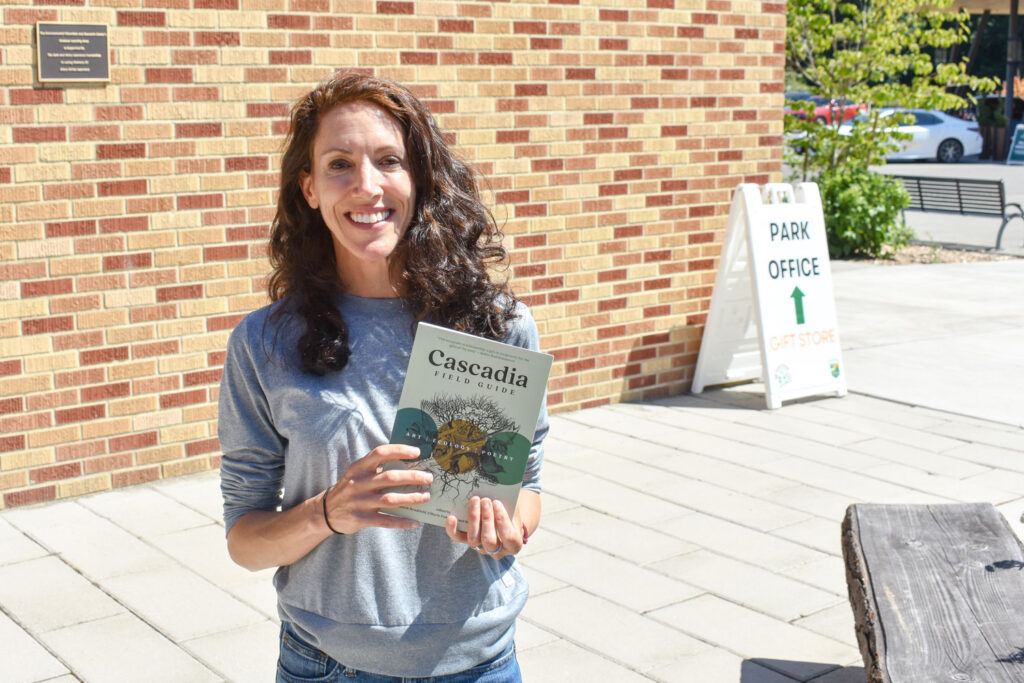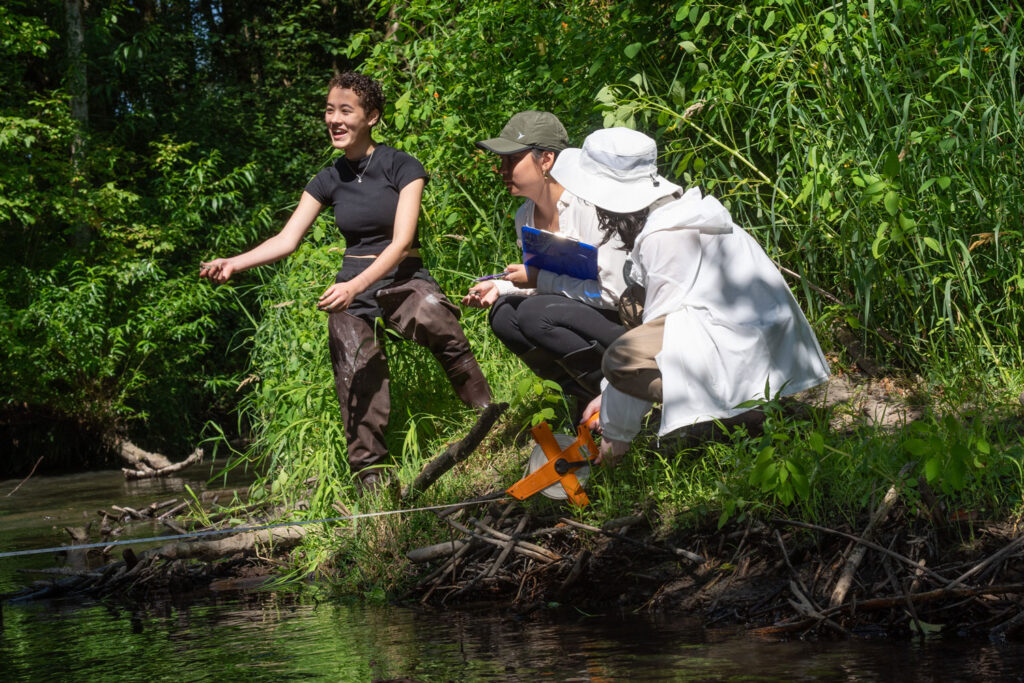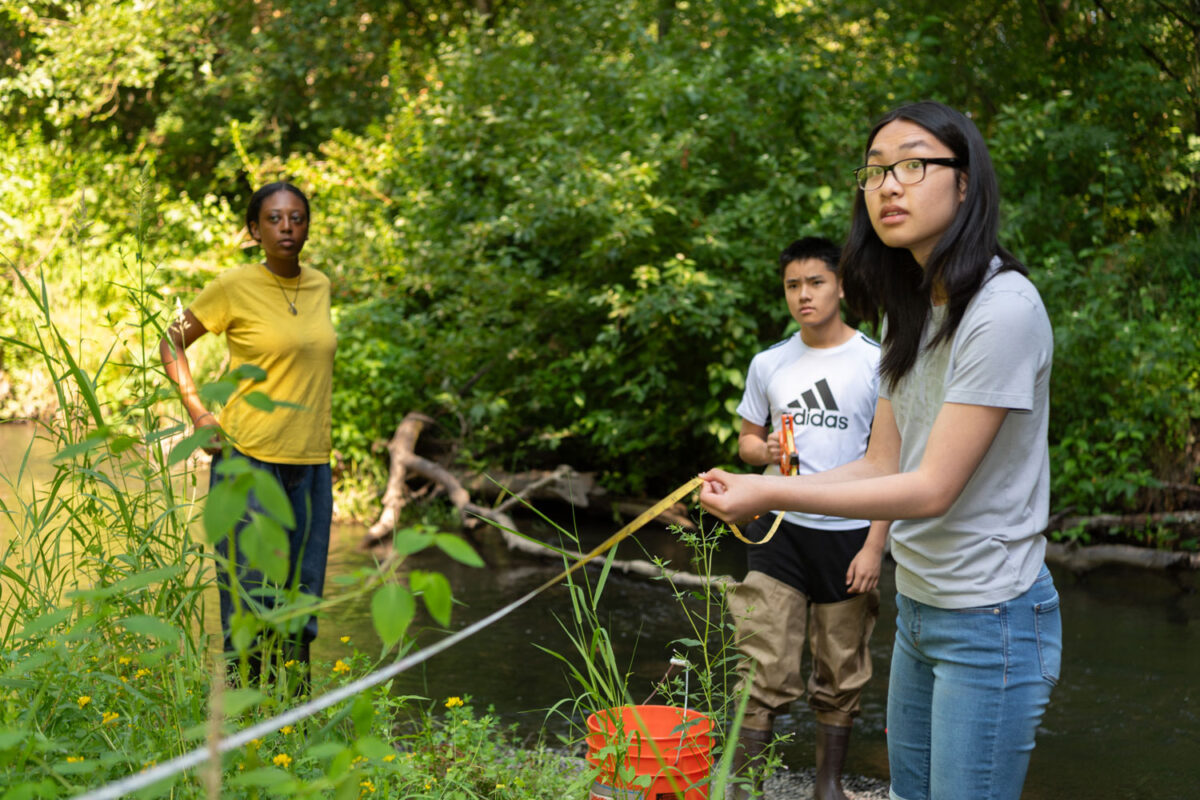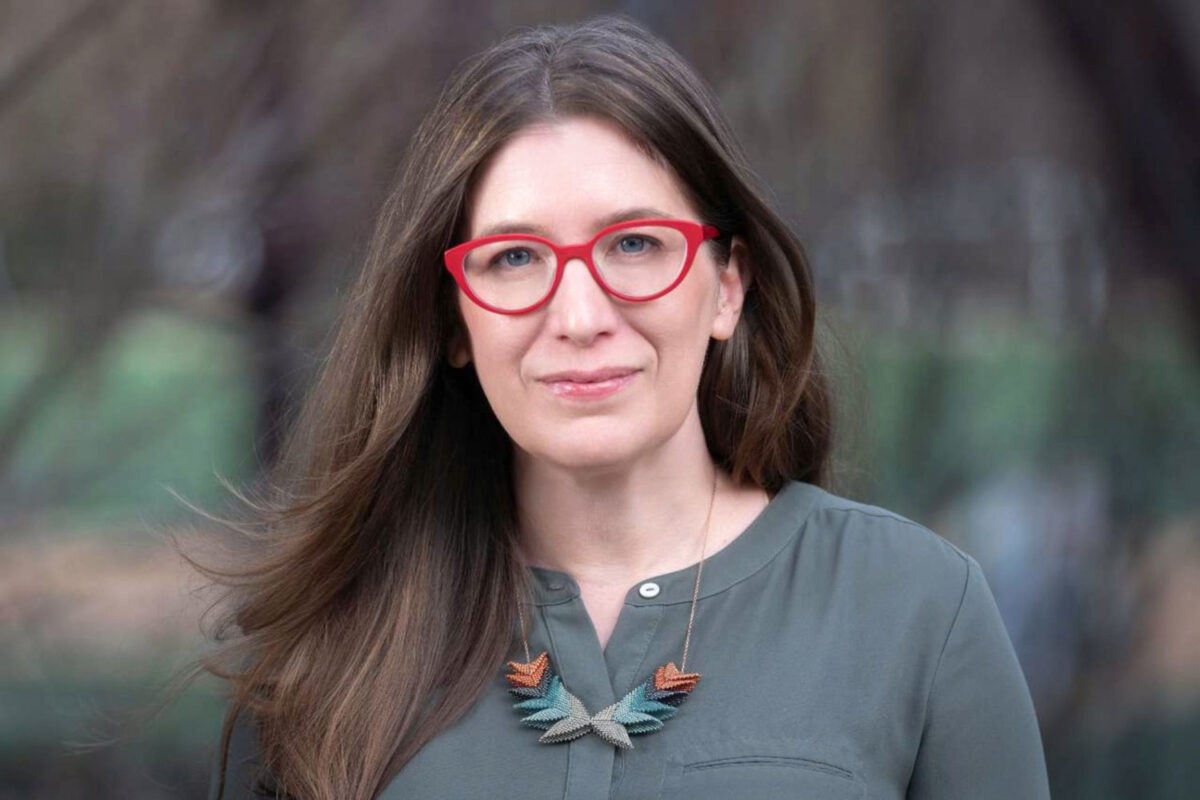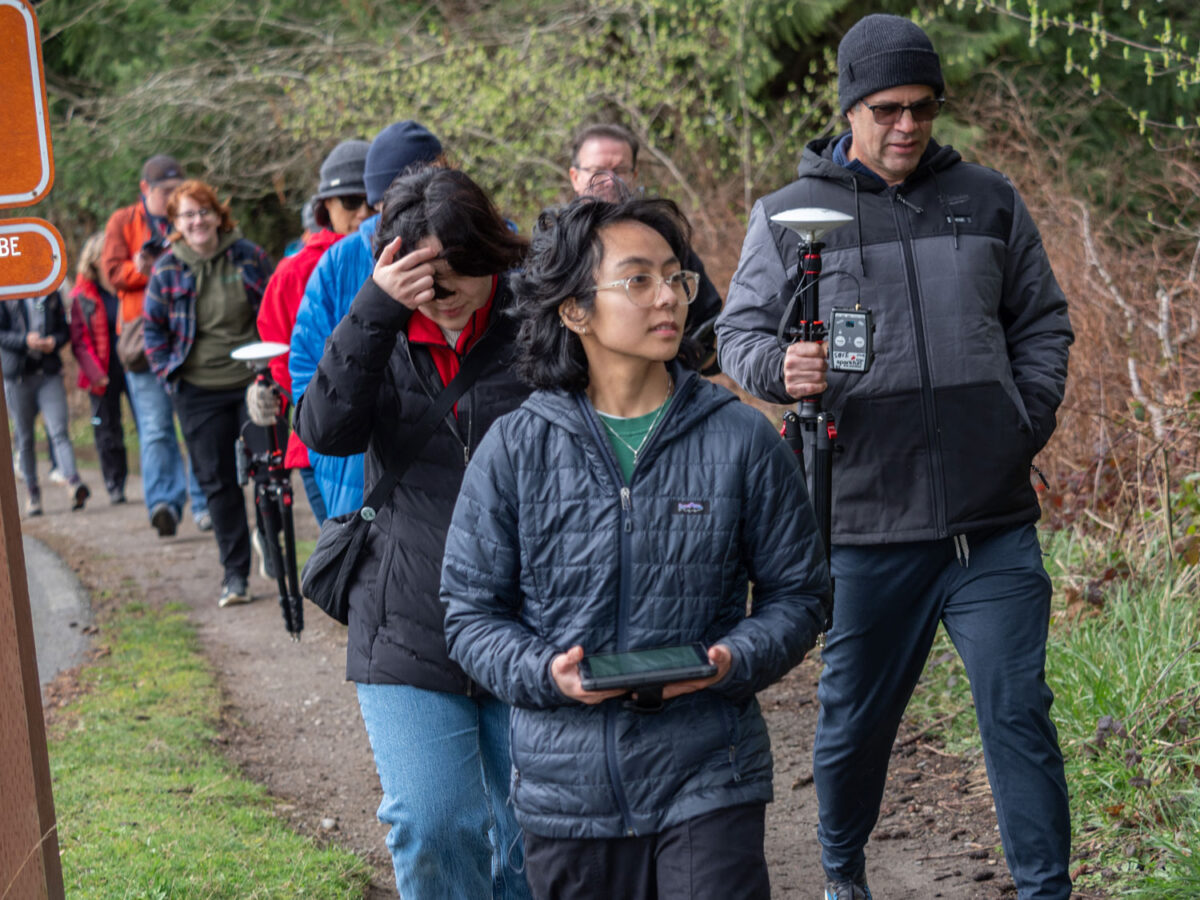Whether new college students arrive on campus sure of their chosen degree path or uncertain and eager to explore their options, the seeds of inspiration are often planted long before enrollment. Not all students have equal opportunities for exposure to a diverse array of career pathways, however, particularly when it comes to new and burgeoning careers, such as the rapidly growing green jobs sector.
The University of Washington Bothell aims to prepare the next generation of college students for the green economy, in part through the launch of the Environmental Careers Preparedness program that will develop K-16 educational pathways to careers in environmental and sustainability fields.
“The fundamental way that we’ve designed this program is with an equity and justice framework in mind,” said Dr. Veronica Cassone McGowan, EnCAP coordinator and research scientist in the School of Educational Studies. “Equity is not just about having access to what currently exists. Students being able to picture themselves in these jobs and having the agency to change the systems that are in place to reflect their own ways of knowing in their communities — that is the most important foundation.”
This summer, EnCAP welcomed its first cohort of 20 high school students for a four-week program to learn about the range, impacts and diversity of green career pathways in Washington.
“Equity is not just about having access to what currently exists. Students being able to picture themselves in these jobs and having the agency to change the systems that are in place to reflect their own ways of knowing in their communities — that is the most important foundation.”
Dr. Veronica Cassone McGowan, EnCAP coordinator
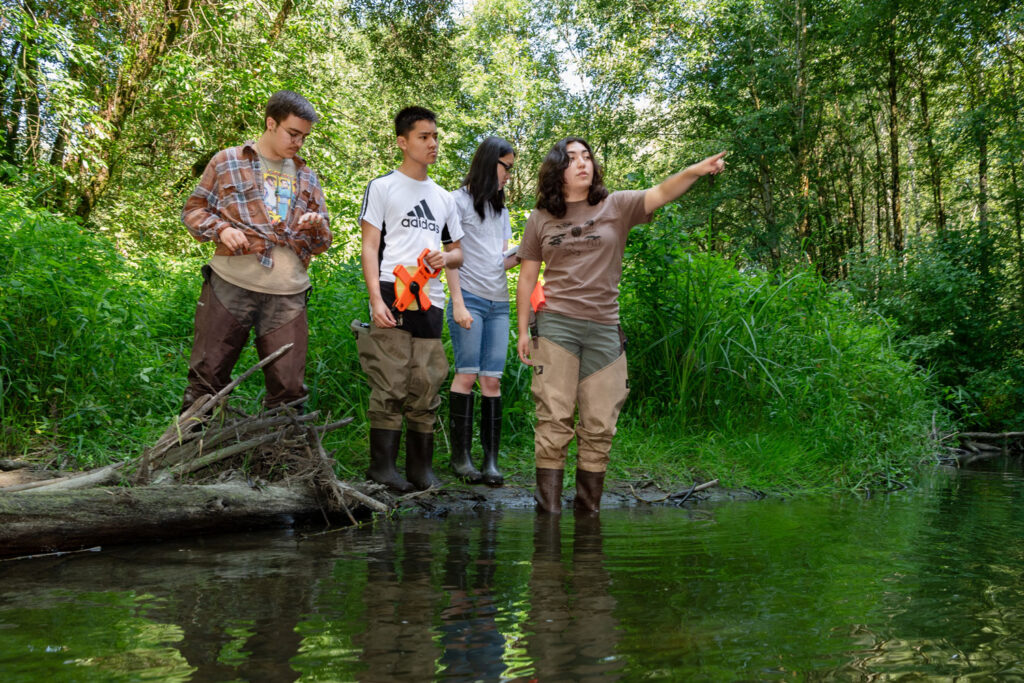
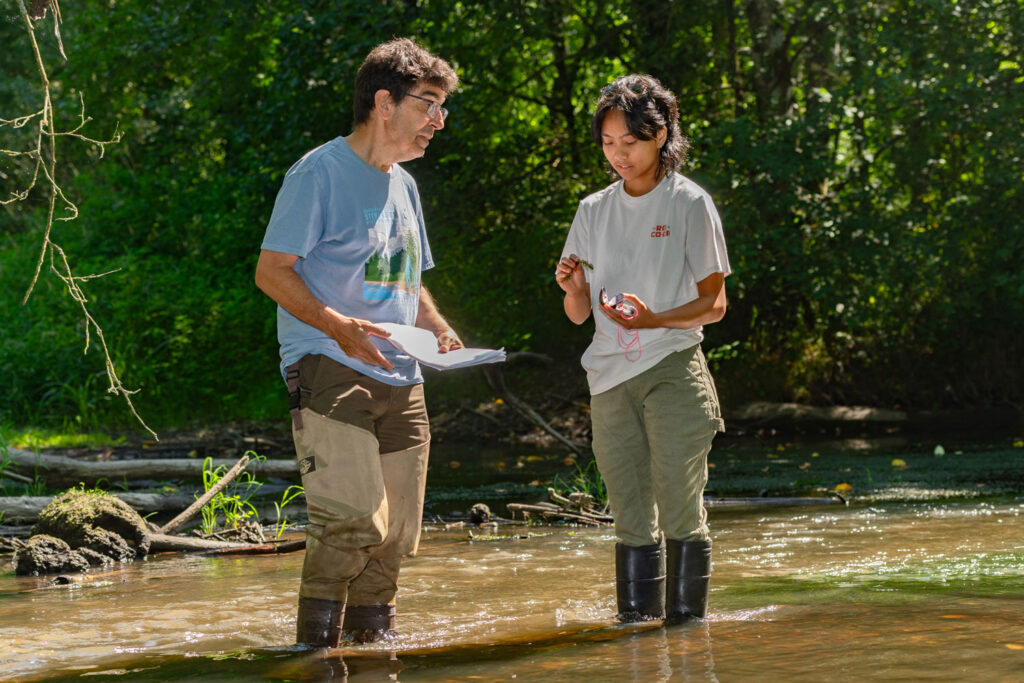
Beyond the science
The EnCAP program began several years ago as a project proposal that several faculty members collaborated on but was delayed due to the COVID-19 pandemic. Then in January 2023, the project received a $811,061 grant as part of $19.4 million in federal funding secured by Congresswoman Suzan DelBene (WA-01) for community projects across the 1st Congressional District in Washington state.
Over the next year, faculty worked to create a curriculum that reflected the wide range of skills and career paths that support the green economy. While much of the curriculum centers around science topics, the program also emphasizes an interdisciplinary approach that incorporates creative and cultural applications.
“The real goal of this program is to make environmental career opportunities more visible for students and to help them also realize that green careers come in many different forms — not just those in science and technology but also in the arts and the humanities,” said Dr. Santiago Lopez, associate professor in the School of Interdisciplinary Arts & Sciences and faculty director for programming at the Environmental Education & Research Center. “We really aim to expand that notion and change perceptions around green careers to showcase the many opportunities beyond the hard sciences.”
The summer program included six modules, each taught by a different instructor, with interdisciplinary topics ranging from salmon ecology and restoration to mapping invasive species to land-based writing practices and storytelling. Students learned hands-on in the classroom and the surrounding Saint Edward State Park and the UW Bothell campus wetland.
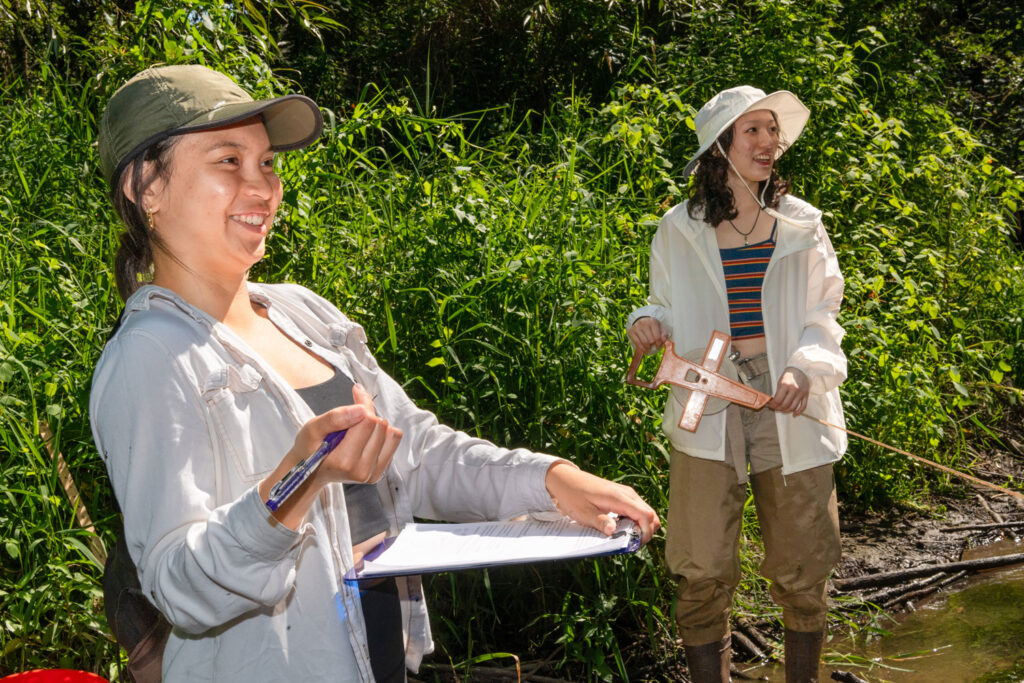

Learn through teaching
Alongside the six instructors, four undergraduate students from UW Bothell also served as co-leads in the modules. As summer teaching and research scholars, they worked in partnership with faculty to teach and mentor the high school students and conduct their own research.
For senior Conservation & Restoration Science major Katrina Briggs, the experience offered an opportunity to promote important environmental science concepts, while getting a chance to take on a teaching role. Briggs worked directly with Dr. Amy Lambert, associate teaching professor in the School of IAS, on a module that explored how carbon moves through ecosystems, with a focus on climate, equity and justice.
“I quite like teaching, so when I was working with Dr. Lambert I asked to teach a class, and it was really fun getting to work with high school students,” Briggs said. “They really stayed focused, and I was impressed with how quickly they picked up the material.”
She recalled one student in particular, Vaishnavi Subramanian, a senior at Inglemoor High School, who was drawn to the session on pollinators and chose to look more in depth at the topic in her final project.
“It was fun to see that excitement come out of something that was just a small portion and, to me, felt rushed, but it was enough for her to really be passionate about pollinators,” Briggs said. “It’s really enjoyable to see the passion in a student’s eyes when they really, really like something. Her project was an overview of bees, wasps and flies, and it was very well thought out.”
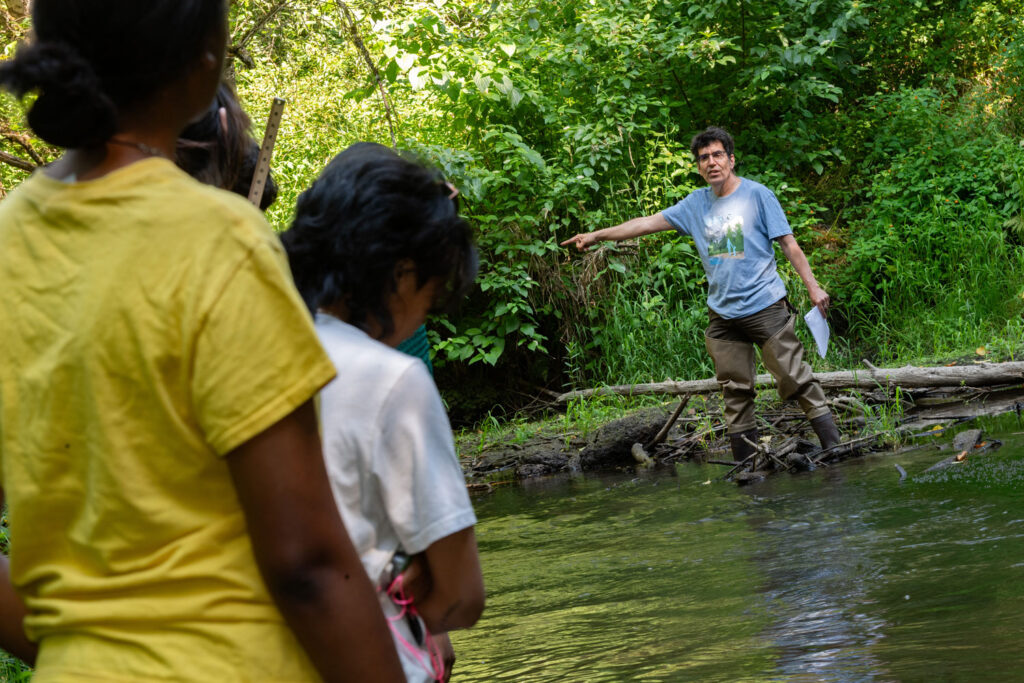
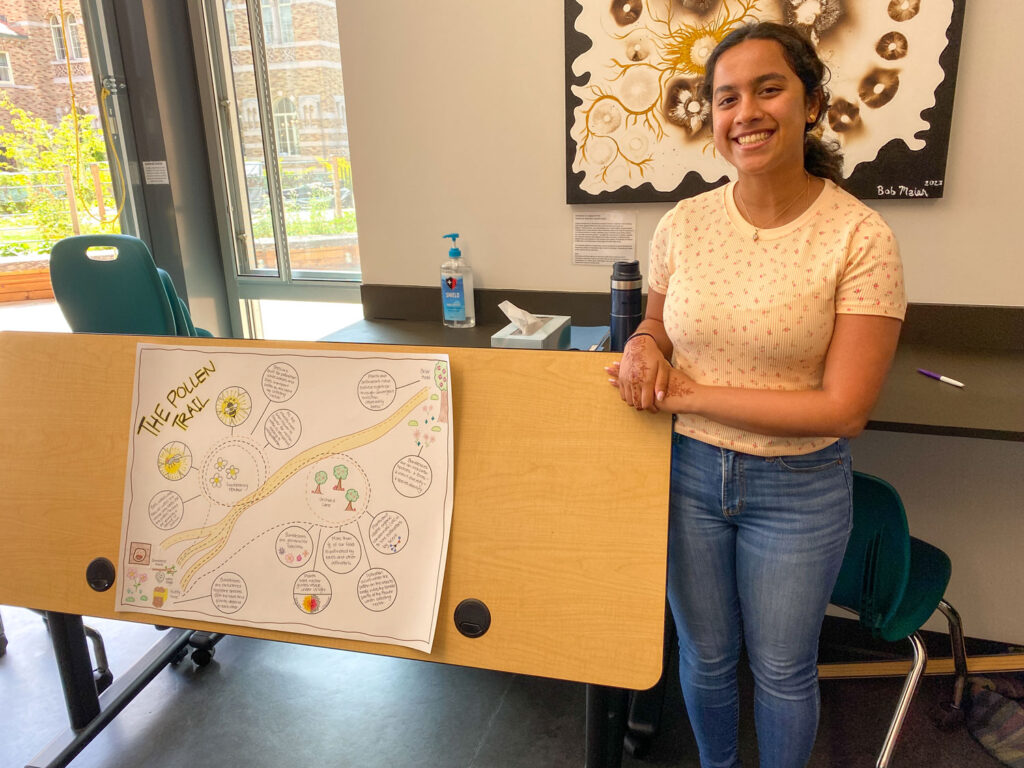
Inspiring student engagement
In final presentations during the program’s last week, the high school students used data visualizations, stories and visual arts to share what they had researched and learned. Subramanian’s project, “The Pollen Trail,” visually demonstrated the impact different types of pollinators, such as bees, wasps and flies, have on an ecosystem.
“The trail basically showcases how pollinators come in all shapes and forms. It can be any animal that moves through a space, whether pollinating on purpose or accidentally,” Subramanian said. “It was something I really wanted to explore the science behind a little more, highlighting those pollinators that evolved with plants, as more than a third of our food is pollinated by animals.”
Subramanian said she plans to major in environmental engineering in college as an entryway to finding her niche in the green economy. She is especially interested in developing engineering solutions to support threatened and endangered species, although she said she is also open to exploring a variety of degree and career paths.
“One of my biggest takeaways from this experience was that all of the professors and the way that they’re contributing to the environment is unique, but it’s all impacting the environment on a global scale,” she said. “I realized no one environmental career is the right environmental career — and that opens up doorways to multiple interests that can contribute to climate action as a whole.”
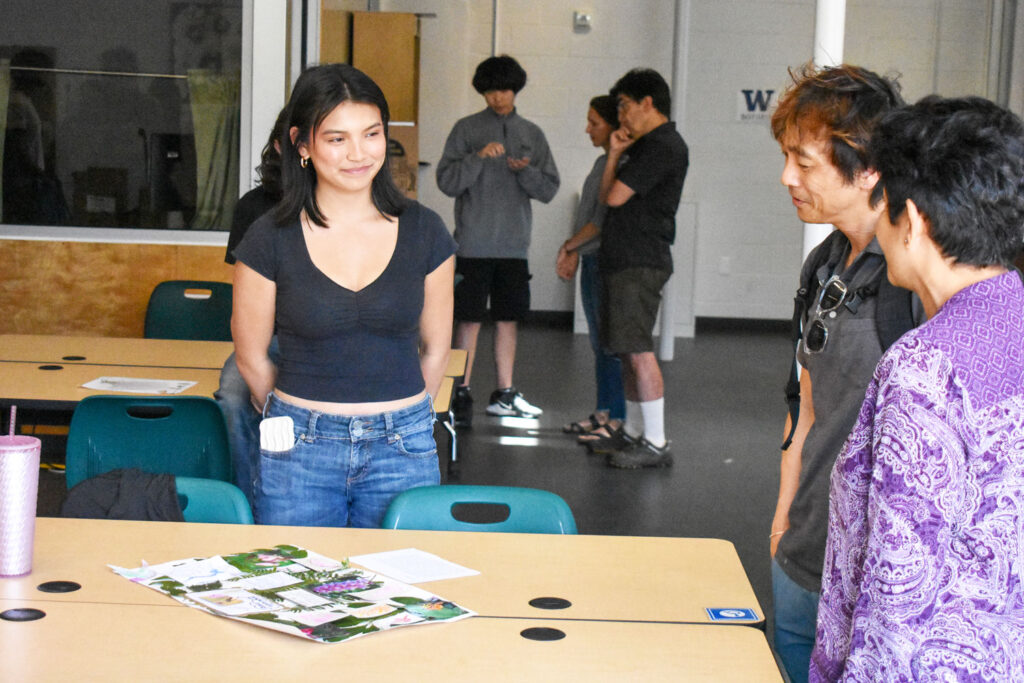
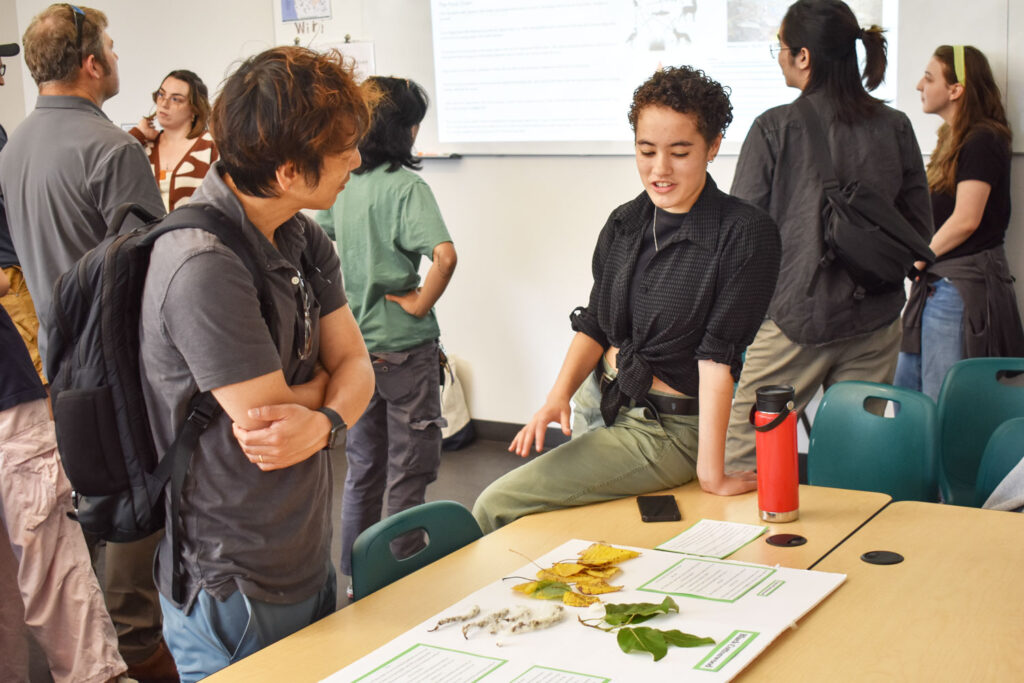
A matter of perspective
Maxwell Johnson-Freire, a senior at Edmonds-Woodway High School, used his final project to provide a new perspective on a key contributor to climate change: carbon output.
The average American produces 16 tons of carbon dioxide each year, according to the University Corporation for Atmospheric Research Center for Science Education. And that number, Johnson-Freire said, can be hard for people to picture in a visual sense.
Looking to provide context for the figure, he used a 3D printer to create a map of Saint Edward State Park. He then created a cube large enough to be a building that represents an individual’s carbon output.
“When you compare the black cube — the carbon dioxide — to the park, you can truly see the scale for how much carbon we produce every year,” he said. “Hopefully this gives people a sense of their impact. It’s crazy to think that just one person in America uses this much every year, but in other countries they might use only a quarter of what we use.”
Johnson-Freire said that before completing the program, he had an interest in being a water resource specialist but he is now also considering a major in environmental engineering.
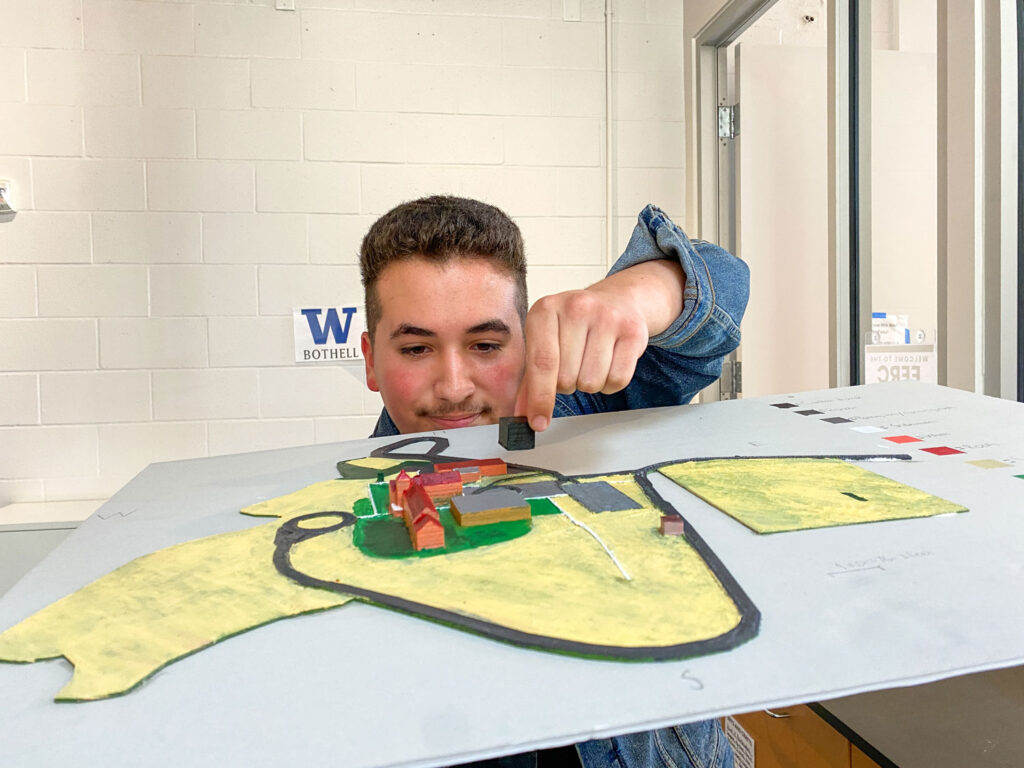
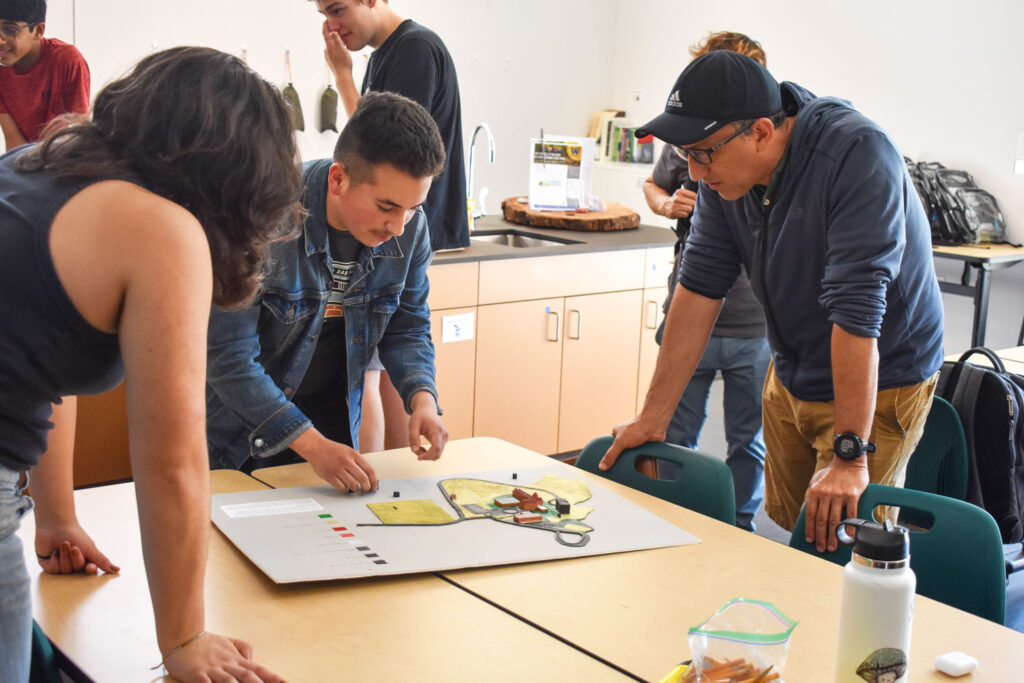
A successful first year
With grant money secured in 2023, the EnCAP program is funded for another two years, which gives the UW Bothell faculty an opportunity to learn from this summer’s session and improve upon it.
“This was kind of our testing year, where we made the curriculum from scratch and implemented it, and I think it went very, very well,” Lopez said. “We had an interesting community of high school and undergraduate students. They all seemed to be engaged and proud of what they accomplished, and I think that just shows the success of the program.
“To see the value they’ve experienced, I think that’s already a successful outcome.”
In addition to their final showcase work, students will also be creating a supplement on Saint Edward State Park for the Cascadia Field Guide to be published at a later time.
